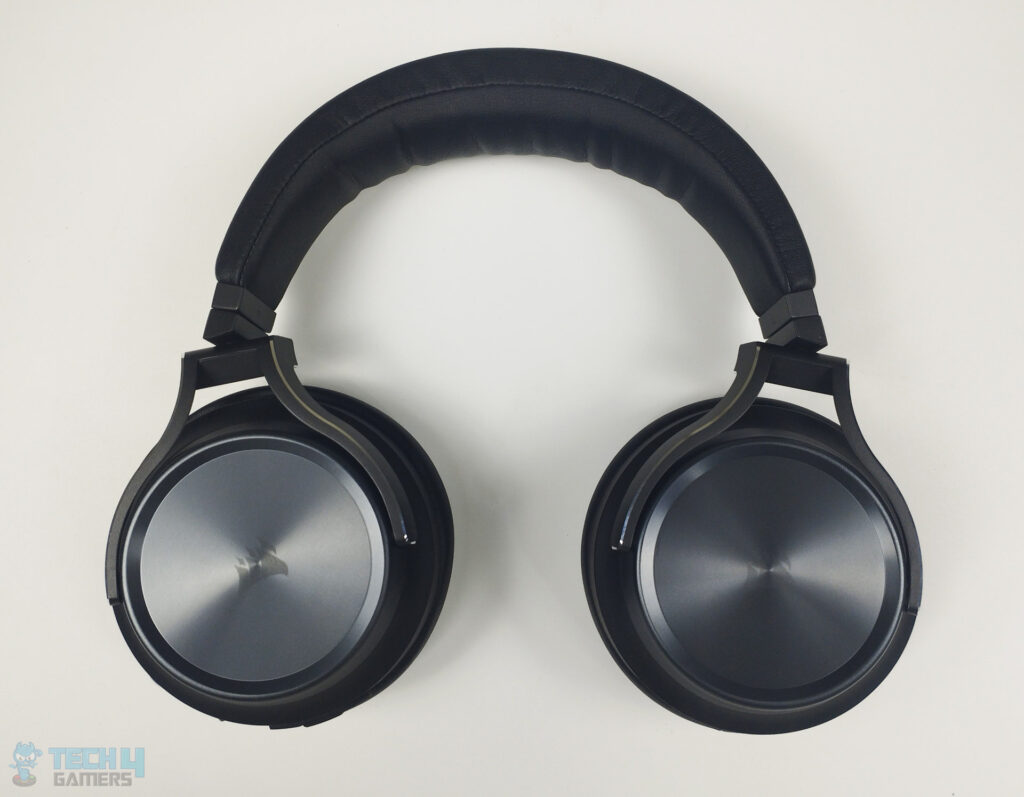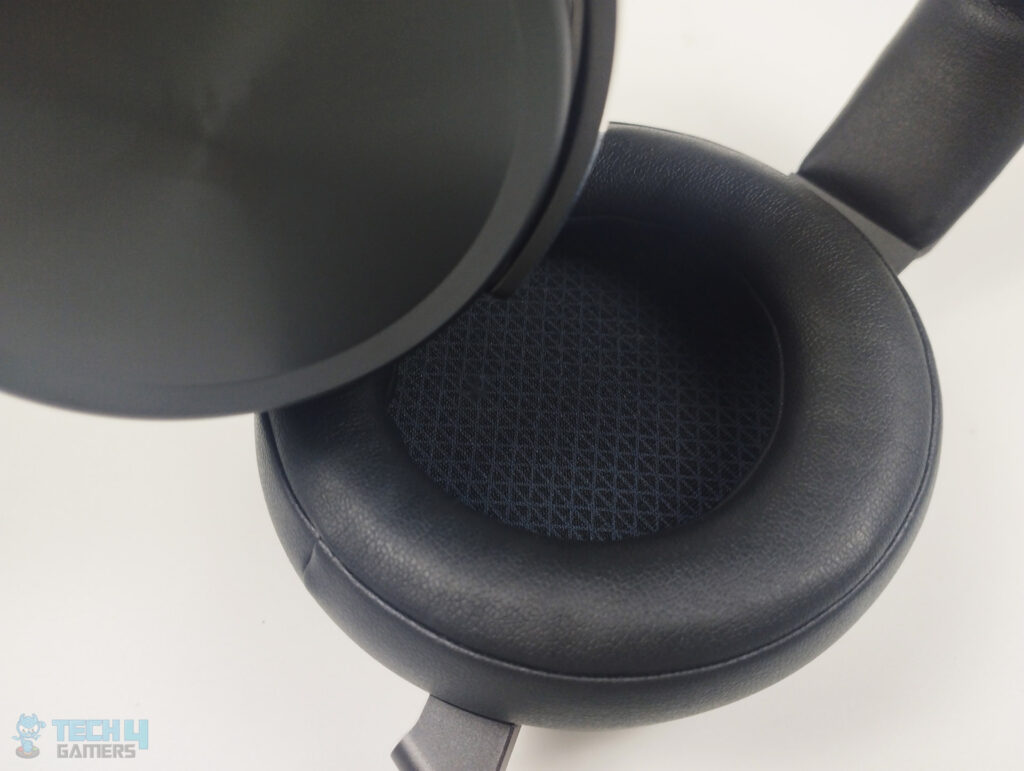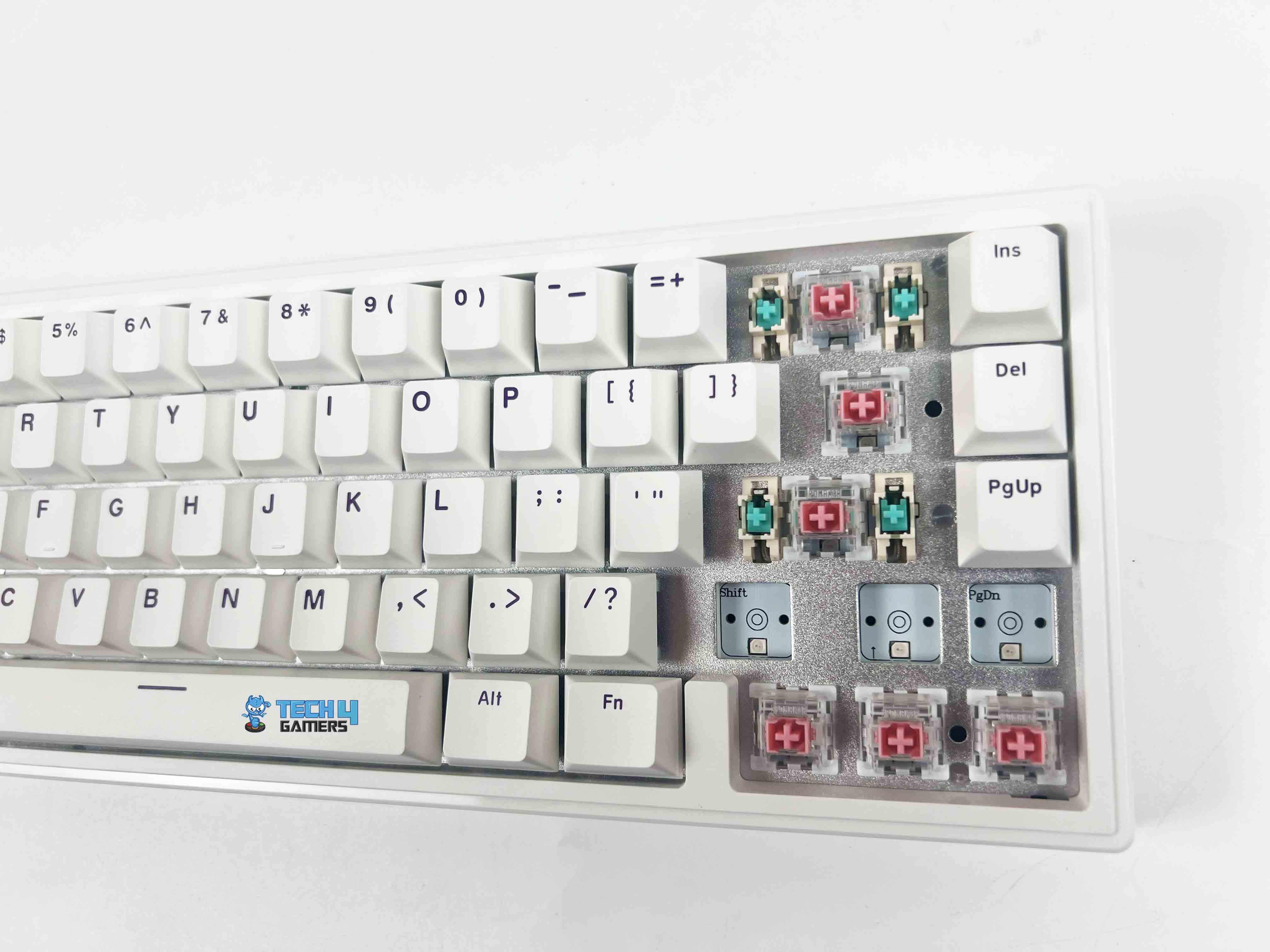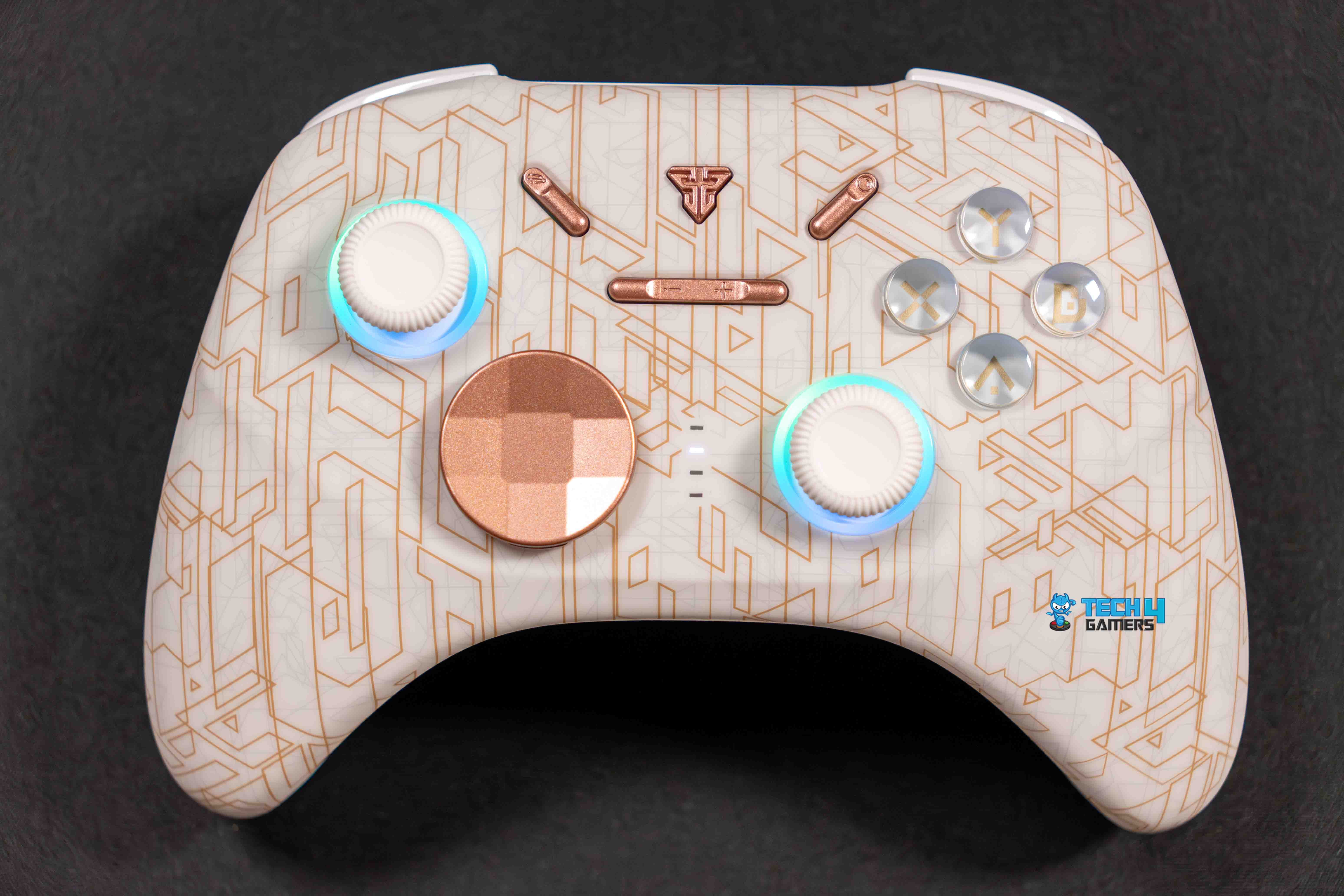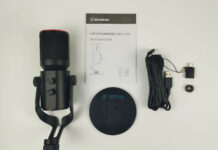Best Gaming Headset?
Review Summary
The Corsair Virtuoso RGB Wireless XT adds Bluetooth connectivity to the Virtuoso series, but that’s about it in terms of changes from previous variants. The price tag is much higher than the previous model, yet it sounds and looks just as outstanding. It is a high-quality wireless option for gamers. It supports simultaneous connections and playback of audio from a computer and a phone or any Bluetooth device.
Overall
-
Build Quality - 9/10
9/10
-
Comfort - 8/10
8/10
-
Design - 9/10
9/10
-
Performance - 8.5/10
8.5/10
-
Value - 7/10
7/10
-
Software Compatibility - 7.5/10
7.5/10
Pros
- Superb Microphone Quality
- the plethora of Bluetooth codecs
- Robust Build Quality
- Diverse Connectivity Options
Cons
- Steep Price Tag
- No Significant Improvements from the Prior Variants
- Low Battery Life
Corsair’s Virtuoso RGB Wireless XT redefines gaming headsets, showcasing Corsair’s commitment to excellence. This cutting-edge accessory combines immersive audio, seamless connectivity, and personalized aesthetics.
In the realm of gaming peripherals, it stands out for its audio quality, comfort, and customizable design. It ensures a unique and fatigue-free gaming experience, bridging the gap between crisp audio and untethered mobility.
- Why you can trust Tech4Gamers: We understand the importance of making informed decisions. That’s why our team spends significant time testing every product we review. Find out more about how we test.
Key Takeaways
- The Corsair Virtuoso RGB Wireless XT headset emerges as a compelling choice for gaming enthusiasts seeking a blend of premium features and versatility. It excels in Comfort and design, featuring lightweight aluminum earcups with an elegant silver finish.
- I liked the Corsair Virtuoso RGB Wireless XT’s immersive Gaming Experience, Ergonomic Design, Audio Excellence, Seamless Connectivity, Intuitive Controls, Detachable Microphone, and Premium Build Quality.
- The things I have not liked about the Corsair Virtuoso RGB Wireless XT are its Price, Battery Life Reduction, Complex Controls, No Protection from Water and Dust, Limited Improvement Over Predecessors, and Not Ideal for Bass-Heavy Music.
Specifications
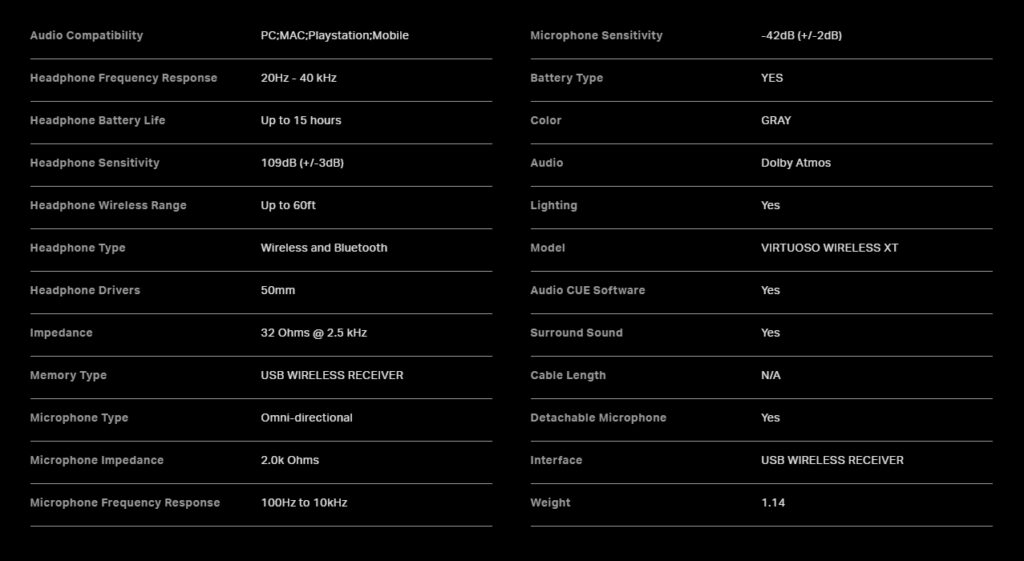
Box Contents
Corsair’s Virtuoso RGB Wireless XT comes with a versatile USB-C cable for charging and wired connection. A 3.5mm audio cable with in-line control provides an alternative wired option. The USB wireless transmitter ensures low latency and 2.4GHz wireless up to 60 feet, though it lacks a dedicated storage spot.
The package features a detachable microphone and Bluetooth compatibility with various devices like PCs, gaming consoles, and mobile phones. It also includes a stylish quilted fabric carrying bag with a magnetic closure, adding a high-end touch to the overall package.
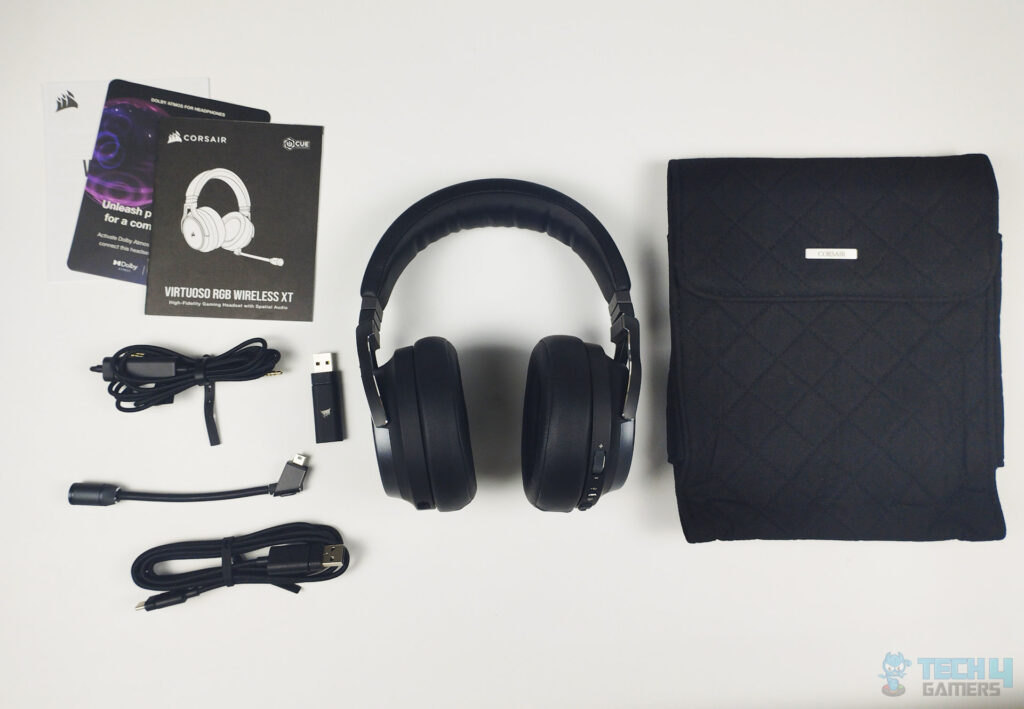
- VIRTUOSO RGB WIRELESS XT
- USB wireless transmitter
- USB charging cable, 1.8m
- 3.5mm stereo cable with in-line controller
- Storage pouch
First Impressions
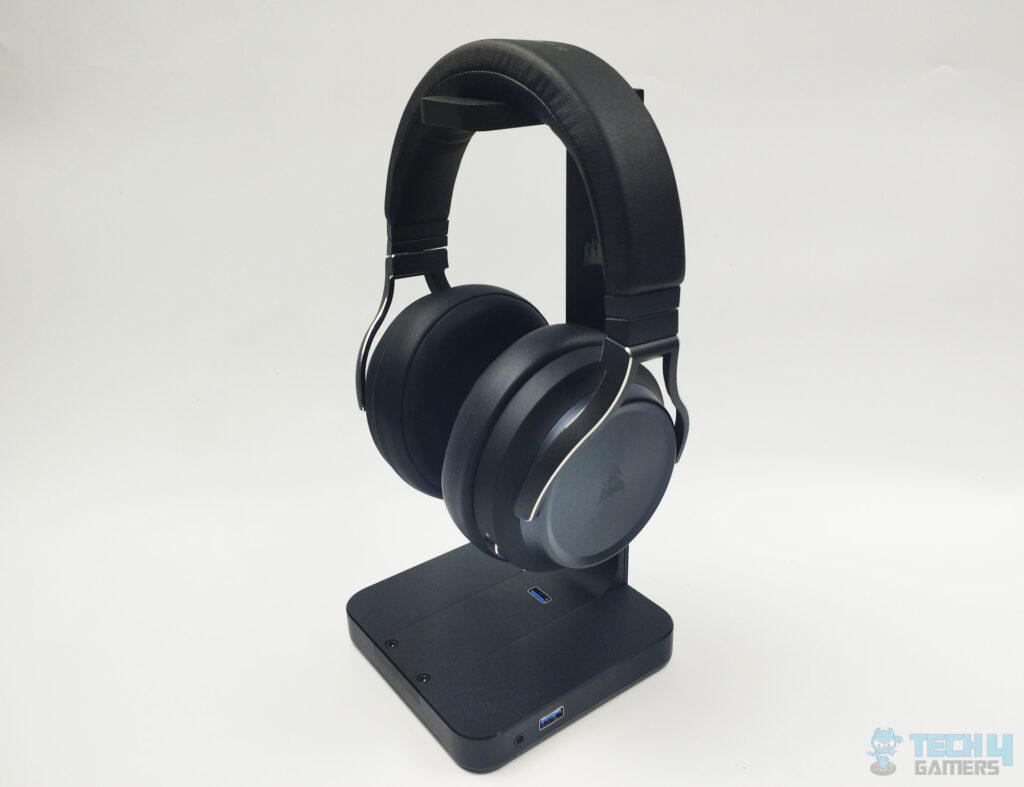
The Virtuoso RGB Wireless XT aims for a top spot among gaming headsets. As the priciest in Corsair’s lineup, it delivers a high-end gaming experience with impressive construction, a wide frequency range, tasteful RGB lighting, and a refined appearance.
Maintaining features of its predecessor, it seamlessly blends with accessories like the Corsair ST100 RGB Headstand. Whether you’re a gamer, audiophile, or on the go, it offers practicality, adaptability, and style.
Design
The aluminum earcups are pretty lightweight and sport a sleek silver finish. The logo’s got some RGB action going on, which adds a nice touch. Now, here’s the thing about the comfort – they’ve gone for a combo of leatherette and memory foam.
The earcups are pretty big, which I love because it’s not just a style statement; they’re comfy too. And get this – even if you wear glasses, these minimize the strain.
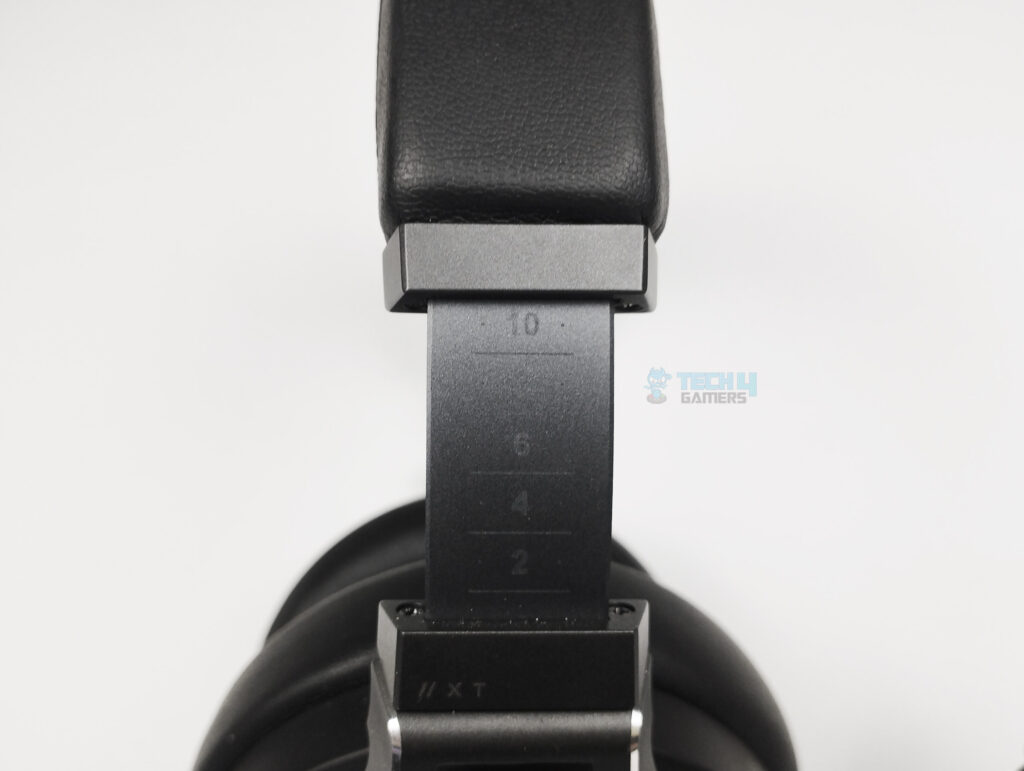
This Corsair headset caught my eye with its diamond-cut earcup hinges and a handy rear volume roller. I love how the headband has ten adjustable settings, ensuring a comfortable fit for all head sizes. Despite having a bunch of buttons and a lot going on with the connections, they’ve managed to maintain a sleek and refined aesthetic.
Comfort
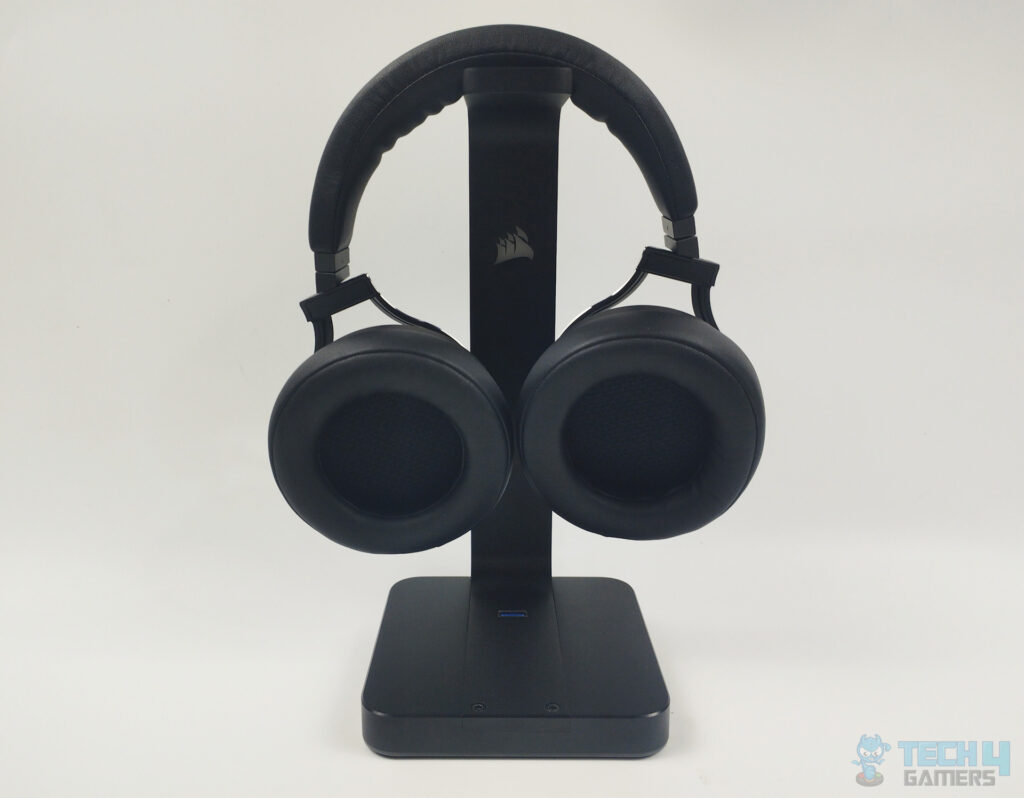
The headset emphasizes comfort with a gentle clamping force and upgraded headband cushioning. Weighing 64.5 grams, it’s slightly heavier but well-balanced for extended use.
Yet, occasional slipping can occur due to the loose headband. The headphones provide a secure fit with tilting hinges but may cause mild irritation with prolonged use. Despite minor drawbacks, the Virtuoso XT excels in providing comfort during extended sessions.
Control Scheme
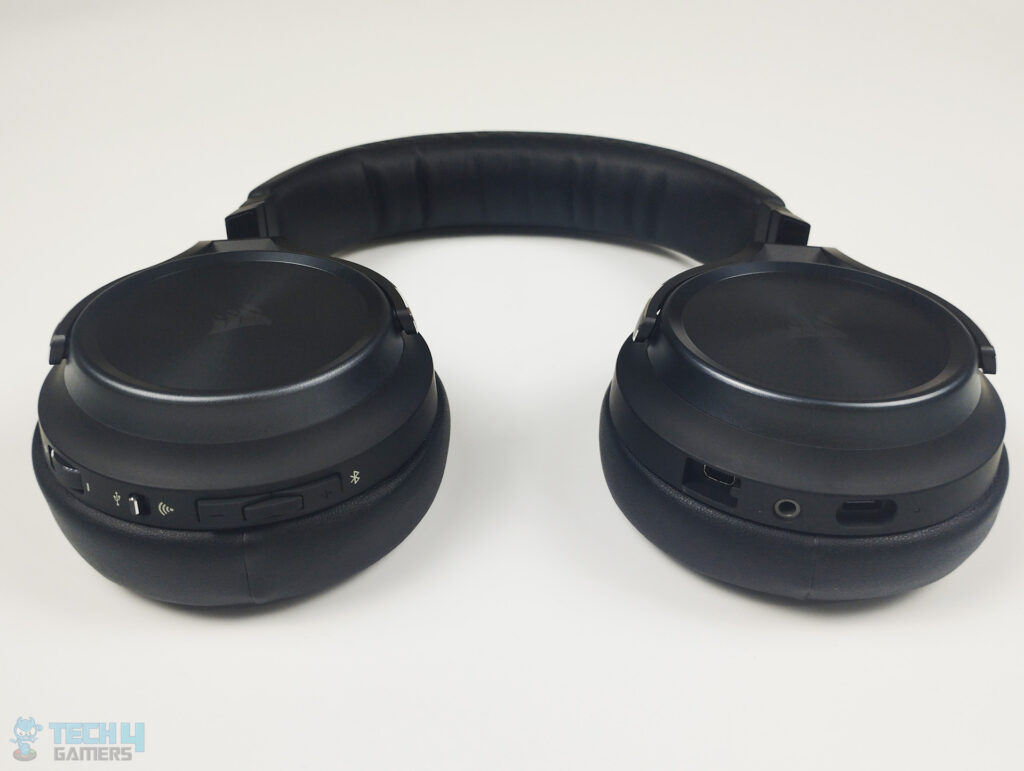
On the right earcup, there’s this easy-to-use Bluetooth three-button setup for power, volume, and track navigation. I like how they’ve made the switch between wired and wireless modes super smooth with a dedicated toggle. Plus, there’s this handy auto-off feature that kicks in after 10 minutes of inactivity, saving me from worrying about battery life.
Now, the left earpiece is quite the hub too. It’s got a flexible microphone, a Mini-USB port for connectivity, a 3.5mm audio jack, and a USB-C port for charging. At first glance, it might seem like a lot, but once you pair your devices, everything falls into place. The exposed USB port gives off this vibe that it’s more for indoor use, but honestly, the overall navigation of the headset is pretty intuitive.
Connectivity
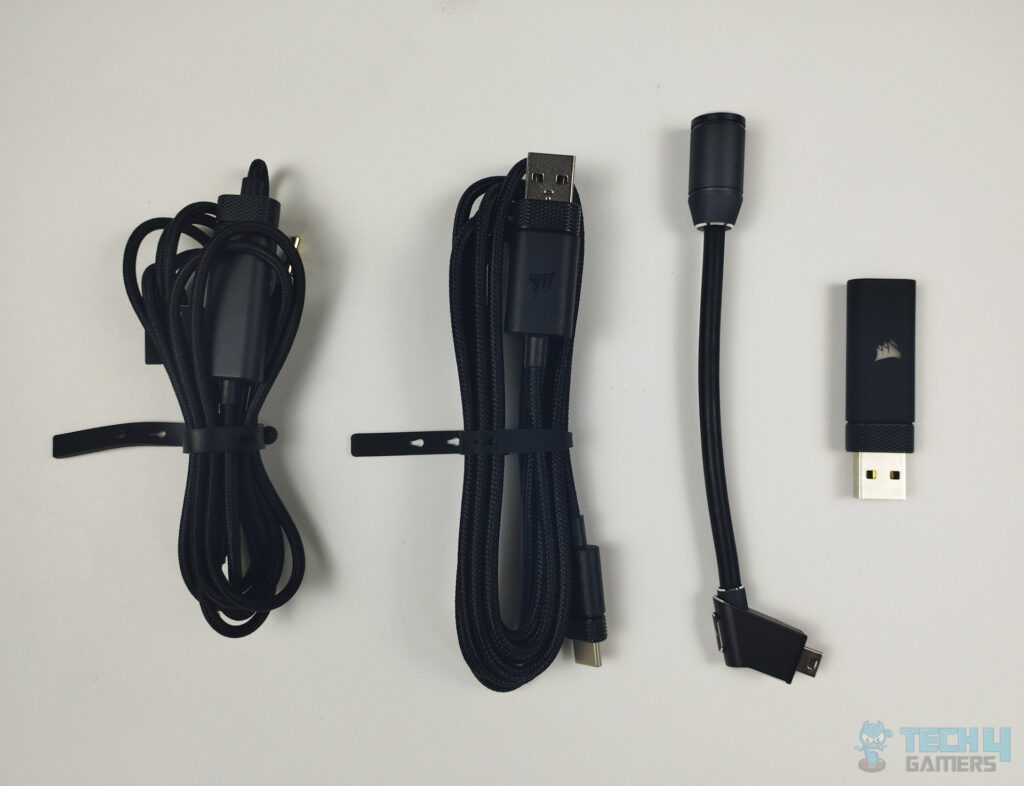
The gaming headset has you covered on the basics for both PC and PS5, and it’s super convenient with USB-C and 3.5mm connectors for Xbox and Switch. What’s cool is that it supports Bluetooth 5.0 with aptX, aptX HD, and AAC – so you’re set in terms of connectivity.
One standout feature for me is the headset’s ability to connect to two devices at the same time using Bluetooth and a 2.4 GHz dongle. This means I can seamlessly switch between tasks without having to mess around with reconnecting. Plus, it has separate volume controls for each source, which is a game-changer.
Performance
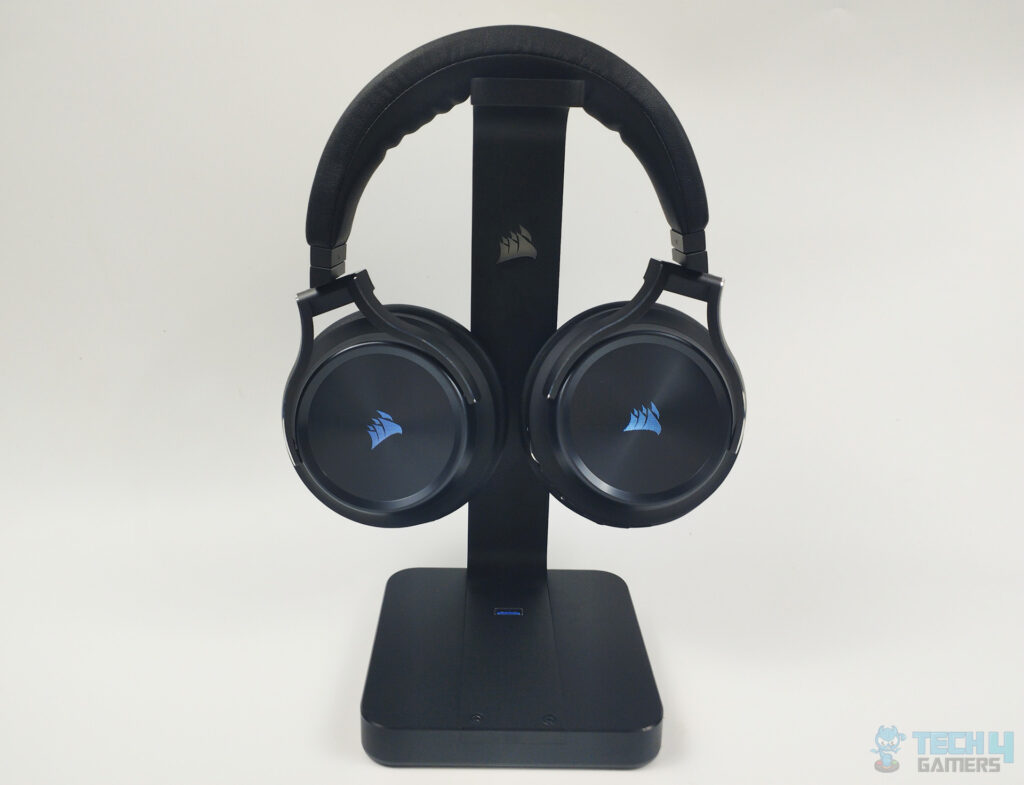
I gotta tell you, it is a game-changer when it comes to sound. The audio quality is out of this world – you can feel the depth and detail in every sound, whether it’s explosions, music, or dialogue.
While the wireless USB dongle provides the most effective experience, connecting via Bluetooth or a 3.5 mm audio port is also an option, though it may lack some punch and the surround sound feature found on PCs.
Music
The Virtuoso RGB Wireless XT impresses as a versatile music companion, delivering striking clarity across various genres in daily use. However, playing Travis Scott’s latest Utopia album revealed some disappointments.
Despite Corsair’s claims of the XT’s 50mm neodymium drivers offering a broad frequency range, I found the lows lacking, and the mids felt excessive and bothersome.
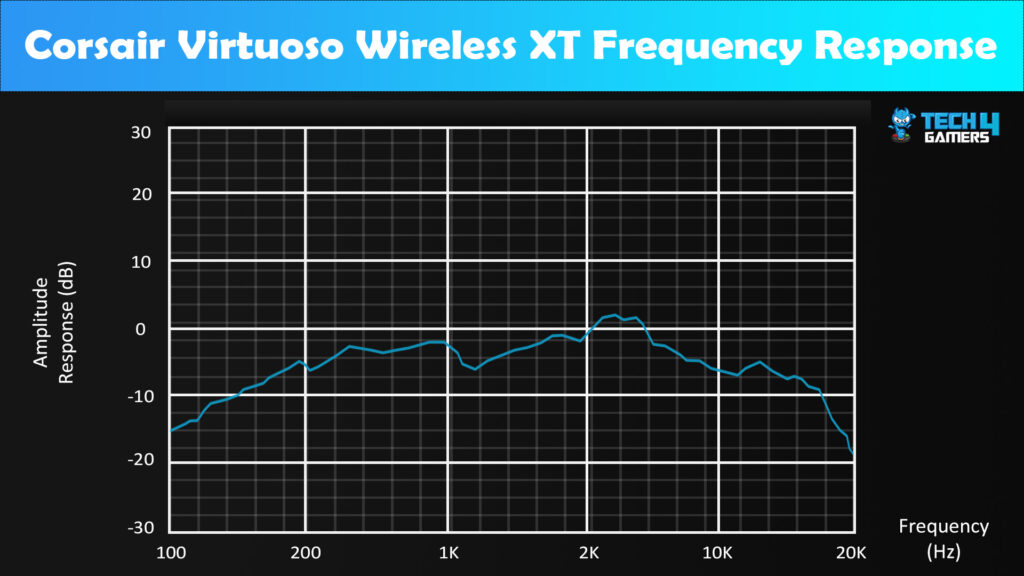
The Corsair Virtuoso RGB Wireless XT has a generally satisfactory sound profile, but some users may notice inaccuracies in reproducing certain bass noises. Corsair’s iCUE software, particularly the “Pure Direct” mode in the Equalizer, significantly enhances sound quality. The headset offers respectable noise isolation for gaming, but those with larger ears may find the somewhat shallow ear cups challenging.
Gaming
I love this headset for gaming, especially when diving into action-packed titles like Doom Eternal. The frequency response is spot-on, delivering a solid performance that enhances the gaming experience. I’ve had fun experimenting with the sound settings, and the FPS competition preset is a game-changer, bringing back that factory-quality audio that’s just perfect.
However, I should mention that using the headset for extended periods might not be the most comfortable experience for everyone. It’s something to keep in mind if you’re planning those marathon gaming sessions.
One of the cool features I appreciate is the support for PS5’s 3D surround sound, Windows Sonic, and Dolby Atmos. It’s versatile and works seamlessly across different platforms. I’ve found the Pure Direct EQ setting to be my go-to for a more natural and immersive gaming experience.
iCUE
To fine-tune your Corsair Virtuoso RGB Wireless XT, download the iCUE software. Version 5.5 features a clean interface supporting all headset functions. Customize RGB lighting, mic sensitivity, and more with three tabs: Lighting Effects, Equalizer, and Device Settings.
The 10-band equalizer in iCUE allows personalized sound profiles with presets like Pure Direct and Bass Boost. Adjust mic volume and sidetone through sliders. Customize the LED Corsair logo on the headphones, though limited to two lighting zones with a full RGB spectrum.
So, there are a couple of downsides to keep in mind with this setup. Firstly, it doesn’t let you save your lighting preferences, and it’s kind of hooked on having iCUE running in the background. Plus, the software is the boss when it comes to deciding how long your headset stays active before dozing off into sleep mode. Oh, and if you’re looking to update the firmware for your headset and USB dongle, you’ll have to go through iCUE for that too.
The dongle supports 2.4GHz multipoint, allowing multiple devices on a single dongle. However, 7.1 virtual surround sound isn’t supported through iCUE, but Dolby Atmos can be enabled through Windows sound settings.
While iCUE installation is optional, it enhances the headset experience for those making extensive adjustments. Overall, the Corsair Virtuoso RGB Wireless XT is versatile, supporting console standards, and iCUE adds refinement for users seeking personalized settings.
Dolby Support
The headset includes a lifetime PC license for the Dolby Access app, offering an alternative to iCUE. This is perfect for those avoiding iCUE or keen to explore the headset’s spatial audio capabilities.
The convenience of changing equalization settings without iCUE adds value. The default sound of the headset is impressive, allowing precise detection of footsteps and gunshots. Dolby Atmos provides a spatial audio effect, immersing you in the action, and making gameplay more responsive and enjoyable.
Battery Life
While Corsair claims 15 hours of use on a single charge for the Virtuoso RGB Wireless XT, my tests showed it lasts a bit longer with constant output and RGB lighting off. Charging via USB-C on a PC takes around three to four hours. Although the battery life dropped from 20 to 15 hours due to dual connection capability, you’ll still get close to 20 hours on a single device.
For gaming, expect to recharge every other day or daily for work and casual gaming. While not the best in class, it’s decent for a gaming headset. Keep in mind that using both Bluetooth and 2.4GHz connections simultaneously affects battery life. Although lacking rapid charge, the ability to play wired via USB while charging eases some concerns.
Microphone Quality
The Corsair Virtuoso RGB Wireless XT maintains Corsair’s tradition of a “broadcast-grade” microphone, offering excellent audio quality for gaming headset standards. While not on par with dedicated podcast microphones, it performs well for in-game chat and applications like Discord or Teamspeak.
So, the cool thing about the Virtuoso XT is its awesome 9.5 mm omnidirectional microphone. What’s neat is that it comes with a mute indicator sporting a bright LED. You can turn that off in iCUE’s Device Settings if it’s not your thing.
Should You Buy It or Not?
Having conducted thorough testing on the Corsair Virtuoso RGB Wireless XT, I have concluded that:
Buy It If:
✅Money is not a constraint: If budget is not a limiting factor for you, the Corsair Virtuoso RGB Wireless XT is an excellent choice, given its premium features.
✅Top-notch Sound and Microphone: If you prioritize exceptional sound quality and a good microphone, the Virtuoso RGB Wireless XT stands out, providing a top-tier gaming experience.
✅Versatility Matters: For those who value versatility, the headset offers various connectivity options, including Bluetooth, making it suitable for different devices.
Don’t Buy It If:
❌Similar Features, Lower Price: If you’re looking for a more budget-friendly option with similar features, the Virtuoso SE in a lighter shade of gray and without Bluetooth connectivity might be a suitable alternative.
❌Battery Life Priority: Those who prioritize longer battery life may find the Corsair Virtuoso RGB Wireless XT falling short in this aspect.
Conclusion
In summary, the Corsair Virtuoso RGB Wireless XT has provided a consistently positive experience over the past month. While not the most premium wireless gaming headset, it stands among the best, offering an excellent microphone, diverse connectivity, and impressive sound quality. However, the price increase for Bluetooth connectivity and enhanced comfort may be a deterrent.
Despite initial concerns about durability, the headset has proven reliable. The ability to simultaneously connect to a computer and phone is convenient but leans more towards luxury. For those on a budget, the Virtuoso SE offers a more affordable option without sacrificing much.
Corsair’s commitment to providing choices is evident, with the XT and SE models catering to different preferences. While the XT’s higher cost and shorter battery life may deter some, it remains one of the finest gaming headsets tested recently. If budget is not a concern and top-tier quality is a priority, the Virtuoso RGB Wireless XT is a solid choice.
Recent Updates
- December 13, 2023: A few text changes to improve readability.
Thank you! Please share your positive feedback. 🔋
How could we improve this post? Please Help us. 😔
[Hardware Reviewer]
After many years of exploiting various pieces of hardware, Abdul Hannan now serves as an editor at Tech4Gamers. He’s been in the PC hardware reviewing industry for almost a decade, and his staff of passionate geeks and reviewers is second to none.
Abdul Hannan is constantly seeking new methods, you will always see him running into New Computer Courses to improve the performance of his computer components since he is an ardent overclocker. He is well-known for providing the most extensive and unbiased analysis of the newest and greatest hardware for PC gaming, including everything from GPUs to PSUs.


 Threads
Threads
